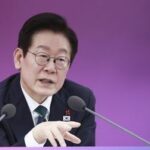Do you know about Korean hot springs?
When you think of hot spring trips, many of you will think of countries famous for hot springs, like Japan. Indeed, Japan has a vibrant hot spring industry and a long history. But do you know about the hot spring culture in Korea? Korean hot springs also have a long history, not inferior to Japan. The first record of a hot spring in our country can be found in “Dongsa Gangmok,” which says that the younger brother of King Seocheon of Goguryeo took a hot spring bath. This history continued to the Joseon Dynasty, where kings often visited Onyang Hot Springs for treatment and rest.

△The appearance of On Palace (Onyang Haenggung) during the Joseon Dynasty (ⓒAsan City Cultural Tourism Site)
The representative hot springs in our country are Onyang Hot Springs in Asan, Suanbo Hot Springs in Chungju, and Baekam Hot Springs in Uljin. A unique feature of Suanbo Hot Springs is that it is the only hot springs in Korea centrally managed by Chungju City. Baekam Hot Springs is a sulfur hot spring where the phrase “I soaked myself in the hot spring and cured my disease” first appeared. However, the Korean hot spring industry has been struggling due to a decrease in visitors due to the proliferation of surrounding commercial facilities and the lack of content development after the heyday of the hot springs in the 80s. On the other hand, North Korea is actively promoting hot springs as one of its representative tourism industries by developing them. The Yangdok Hot Spring Tourist District in North Korea was designed to attract foreign tourists.

△The appearance of the economic development zone in North Korea to attract tourists (ⓒThe Corporation for North-South Coexistence and Unification)
Did you know North Korea has about three times more hot springs than South Korea? While South Korea has around 20 hot springs, North Korea reportedly has over 60. So, what is the most famous hot spring in North Korea?
Rising Tourism, Yangdok Hot Springs
Yangdok Hot Springs is located in South Pyongan Province, Yangdok-gun. North Korea is heavily promoting Yangdok Hot Springs and recommending its residents to take a vacation there. The Yangdok Hot Springs Cultural Resort, where Yangdok Hot Springs is located, began construction in February 2018 and opened in January 2020, but it was closed due to the impact of COVID-19. After the easing of COVID-19, it reopened last year and actively promoted it to residents this winter. Yangdok Hot Springs is one of the tourist districts that North Korea has been nurturing to attract foreign tourists since Kim Jong Un took power, and North Korea is introducing it as a “world-class hot spring cultural resort.”

△The appearance of the women’s open-air bath in Cheoksan Hot Springs (ⓒMoney Today)
Pyongnam Hot Springs, boasting the most enormous scale in North Korea
Due to administrative district changes, Pyongnam Hot Springs, located in South Pyongan Province, is also called Yonggang Hot Springs. Pyongnam Hot Springs existed already, but it was transformed into a modern bathhouse around 1915 at the suggestion of residents. Pyongnam Hot Springs is famous as the largest hot spring in North Korea. It was so significant that it even reorganized the administrative districts by combining parts of Yonggang-gun and Gangseo-gun into the Hot Springs district. Pyongnam Hot Springs are unique because they are saltwater hot springs near the West Sea. Saltwater hot springs are known to be effective for high blood pressure and neuralgia, so many people visit Pyongnam Hot Springs. It is also effective for skin disease treatment, and there are stories of improved skin after a hot spring bath.
Does sand come out instead of water in the “sand” hot springs in Gyeongseong?
Another famous hot spring in North Korea is Gyeongseong Hot Springs. Gyeongseong Hot Springs is located in Haonpo-ri, Gyeongseong-gun, Hamgyeongbuk-do. It has been a famous hot spring for a long time, but it flourished as a tourist spot after a resort was built during the Japanese colonial period. This place, also known as Gyeongseong Sand Hot Springs, became famous because the hot spring water comes up through a thick layer of sand, and the steam bath with this sand is said to have promising therapeutic effects. Gyeongseong Hot Springs is also a hot spring tourist area where foreign tourists can visit, and it is considered one of the representative hot springs in North Korea because it has a deep history known for over 500 years. There are several springs where hot spring water comes out in Gyeongseong Hot Springs, but in reality, only two of them are used.
Characteristics of North Korean Hot Springs
North Korean hot springs have two characteristics. First, hot springs with high water temperatures are distributed along the west and east coasts, and low-temperature springs are distributed in inland mountainous areas. North Korea has about 60 hot springs with temperatures above 50°C and about 50 springs with temperatures around 10°C. The second characteristic is that North Korean hot springs are therapeutic or restorative. You can easily find sanatoriums in places with hot springs in North Korea. Since hot springs are not easily accessible to ordinary residents in North Korea, most people visit them for treatment. North Korea’s Central TV also promotes hot springs by citing this point.
What’s the hidden agenda behind North Korea’s hot spring development?
North Korea is actively developing and promoting hot springs ostensibly to provide “civilized living” for the people. However, there is another intention here. Ultimately, North Korea’s hot spring development means earning foreign currency through developing the tourism industry. As the tourism industry is not included in the UN’s sanctions against North Korea, North Korea has focused on developing the tourism industry as the sanctions have prolonged.

△Foreigners touring Pyongyang City (ⓒYonhap News)
Hot springs that cannot be separated from our people
For the Korean people, hot spring culture has a deep history and tradition dating back to the Three Kingdoms period. However, as the hot spring industry has faded and stagnated in South Korea, the history and tradition are fading. Similarly, in North Korea, hot springs are fading to earn foreign currency. The challenge for South Korea and North Korea is preserving and publicizing our precious hot spring culture.















Most Commented